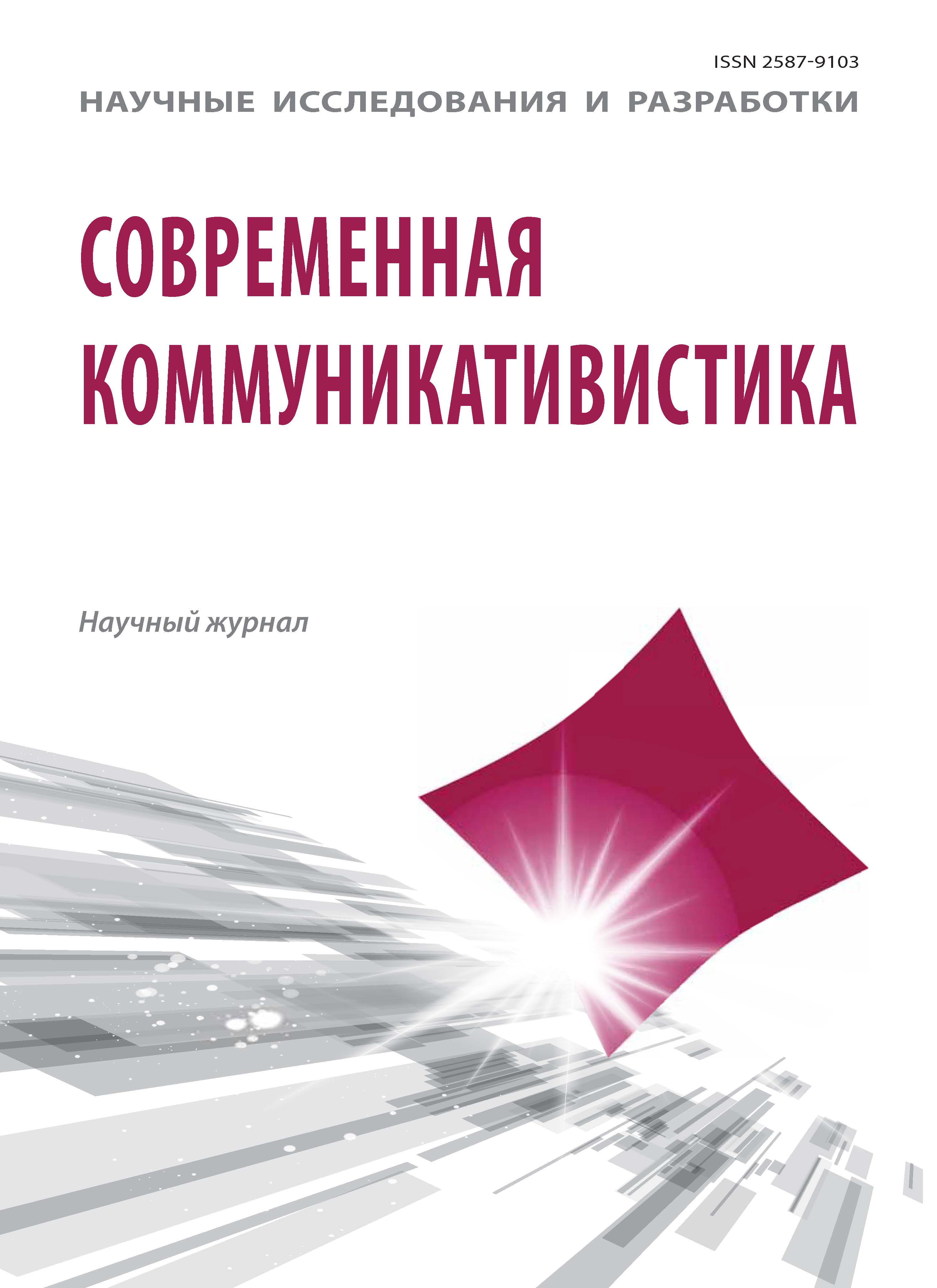Ryazan', Orel, Russian Federation
The paper deals with one of the aspects of fictional communication, namely communication between the protagonist and the reader. Heroes of English language narrative discourse with the help of introspection (inner mental, emotional and physical state) can tell the reader about their feelings and emotions. Such an insight into the inner world of characters can help better decode their mood, attitude to current events, motivation of their actions and etc. The paper presents the typology of inner states of protagonists. These are intellectual states, emotional states, inner physical states and physical sensations. With the help of introspection the reader can perceive the fictional world through the character’s mind and senses, which helps to better decode the writer’s message.
fictional communication, introspection, English language narrative discourse, inner world of protagonists.
Изучение коммуникативной деятельности человека представляется актуальным направлением современных лингвистических исследований. Подробному анализу подвергается научная коммуникация, в частности аргументативный дискурс [1–3]. Большой интерес вызывают дискурсивные стратегии презентации и самопрезентации политика, выделяются и описываются тактики убеждения адресата и их лингвистическая реализация [5; 6]. В современной публицистике все чаще поднимается вопрос о манипулирующей составляющей, когда журналисты ставят перед собой цель повлиять на мысли и настроения аудитории, используя разнообразный иллюстративный материал [4].
Художественный текст также может рассматриваться как особый вид коммуникации, например, как диалог между автором и читателем, автором и персонажами или между персонажем и читателем. Целью данной статьи является показать, что персонажи англоязычного нарративного дискурса через интроспекцию передают читателю информацию о своем внутреннем состоянии. Отметим, что под интроспекцией понимается внутреннее ментальное, эмоциональное или физическое состояние персонажа, оцениваемое им самим. Указание на самые тонкие переживания персонажей можно рассматривать как часть диалога персонажа с читателем, поскольку, скрывая движения своей души от других фигур фикциональной реальности, персонажи (конечно, по воле автора) описывают свои ощущения читателю, как бы уточняя свои действия и мотивацию. В первую очередь, необходимо показать интеллектуальные проявления внутреннего мира героев. Например:
(1) The paternal laugh was echoed by Joseph, who thought the joke capital. The ladies only smiled a little. They thought poor Rebecca suffered too much. She would have liked to choke old Sedley, but she swallowed her mortification as well as she had the abominable curry before it, and as soon as she could speak, said with a comical, good-humoured air, – ‘I ought to have remembered the pepper which the Prince of Persia puts in the creamtarts in the Arabian Nights. Do you put cayenne into your cream-tarts in India, sir?’ [12, с. 37].
На интроспекцию в данном контексте указывает глагол мыслительной деятельности thought, позволяющий оценить интеллектуальную активность героя, который абсолютно уверен в том, что у него получилась великолепная шутка (thought the joke capital). С другой стороны, читателю виден внутренний мир героини, которая явилась объектом этой шутки: she swallowed her mortification as well as she had the abominable curry before it. В силу одной из причин, известных только ей, она вынуждена была «проглотить» унижение точно так же, как и ужасное (по ее мнению) кушанье перед этим, и сделать вид, что ее собеседник очень остроумен. Таким образом, только читатель при помощи интроспекции может представить себе истинные ощущения героев. Становится совершенно очевидным, что первый персонаж считает себя неотразимым, даже не подозревая, что производит совершенно обратное впечатление на собеседницу.
1. Kremer I.Yu. Argumentatsiya i ee lingvisticheskaya reprezentatsiya v nemetskom kriticheskom tekste [Argumentation and its linguistic representation in the German critical text] Vestnik Ryazanskogo gosudarstvennogo universiteta im. S.A. Esenina. [Bulletin of the Ryazan State University named after S.A. Esenina]. 2007, no. 16, pp. 67-77.
2. Kremer I.Yu. Lingvisticheskaya reprezentatsiya mental’nosti avtora kriticheskogo teksta [Linguistic representation mentality website critical text]. Vestnik Moskovskogo gosudarstvennogo lingvisticheskogo universiteta [Bulletin of Moscow State Linguistic University]. 2009, no. 560, pp. 116-124.
3. Kremer I.Yu. Kommunikativnye aspekty argumentatsii v nemetskoy kriticheskoy proze [Communicative aspects of argumentation in the German critical prose]. Nauchnye issledovaniya i razrabotki. Sovremennaya kommunikativistika [Research and development. Modern communications studies]. 2013, vol. 2, no. 5, pp. 53-57.
4. Lenkova T.A. Vizual’nye kompozitsionnye formy kak sposob privlecheniya vnimaniya tselevoy auditorii v sovremennoy publitsistike [Visual compositional forms as a way to attract the attention of the target audience in modern journalism]. Nauchnye issledovaniya i razrabotki. Sovremennaya kommunikativistika [Research and development. Modern communications studies]. 2013, vol. 2, no. 3, pp. 52-54.
5. Troitskaya T.B. Rol’ otsenochnosti v realizatsii polemicheskoy strategii v nemetskoyazychnom publitsisticheskom diskurse [The role of evaluation in the implementation of the strategy in the German polemical journalistic discourse]. Vestnik Moskovskogo gosudarstvennogo lingvisticheskogo universiteta [Bulletin of Moscow State Linguistic University]. 2009, no. 560, pp. 221-231.
6. Troitskaya T.B. Taktiki ubezhdeniya adresata v piar-tekstakh [Persuasion tactics destination in PR texts]. Nauchnye issledovaniya i razrabotki. Sovremennaya kommunikativistika [Research and development. Modern communications studies]. 2013, vol. 2, no. 5, pp. 58-63.
7. Austen J. Pride and Prejudice [Pride and Prejudice]. London: Penguin Books, 1994.
8. Brown D. The Lost Symbol Publ., London: Bantam Press, 2009.
9. Lawrence D.H. Lady Chatterley’s Lover. London: Penguin Books, 1997.
10. Maugham W.S., Rain. Stories. St. Petersburg. KARO Publ., 2009.
11. Orwell G. 1984. St. Petersburg. KARO Publ., 2010.
12. Thackeray W.M. Vanity Fair. London: Wordsworth Classics Publ., 2001.
13. Wilde O. Picture of Dorian Gray. Novosibirsk, Siberian university Publ., 2010.







